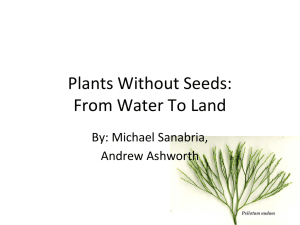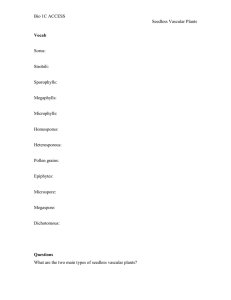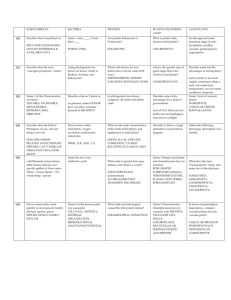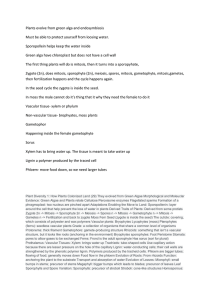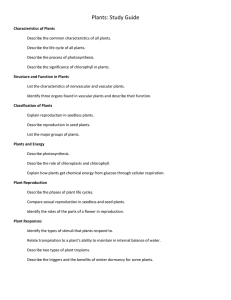12/7/10 Test Review Handout
advertisement
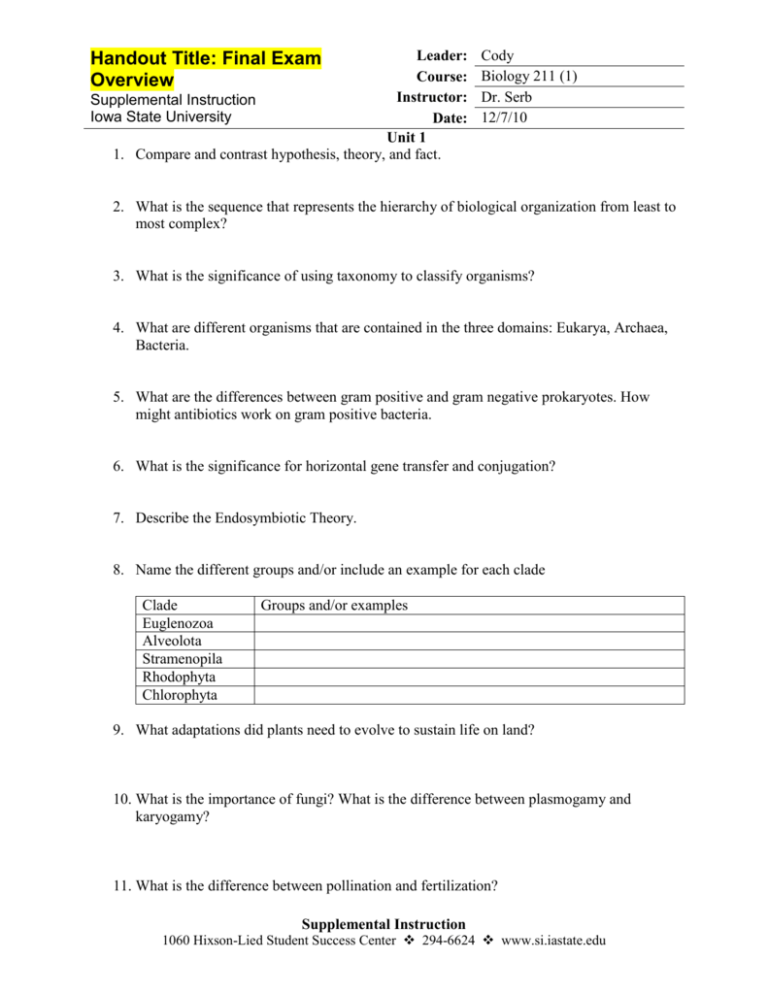
Leader: Course: Instructor: Supplemental Instruction Iowa State University Date: Unit 1 1. Compare and contrast hypothesis, theory, and fact. Handout Title: Final Exam Overview Cody Biology 211 (1) Dr. Serb 12/7/10 2. What is the sequence that represents the hierarchy of biological organization from least to most complex? 3. What is the significance of using taxonomy to classify organisms? 4. What are different organisms that are contained in the three domains: Eukarya, Archaea, Bacteria. 5. What are the differences between gram positive and gram negative prokaryotes. How might antibiotics work on gram positive bacteria. 6. What is the significance for horizontal gene transfer and conjugation? 7. Describe the Endosymbiotic Theory. 8. Name the different groups and/or include an example for each clade Clade Euglenozoa Alveolota Stramenopila Rhodophyta Chlorophyta Groups and/or examples 9. What adaptations did plants need to evolve to sustain life on land? 10. What is the importance of fungi? What is the difference between plasmogamy and karyogamy? 11. What is the difference between pollination and fertilization? Supplemental Instruction 1060 Hixson-Lied Student Success Center 294-6624 www.si.iastate.edu 12. Name an example of each group of plants Anatomy of Plant Example Nonvascular, seedless Vascular, seedless Vascular, “naked” seeds Vascular, covered seeds 13. How many of all calories consumed by humans come from 6 species of angiosperms? 14. Sporophytes produce and gametophytes produce . Unit 2 15. What is the difference between protostomes and deuterstome? 16. What are the differences between coelomates, acoelomates, and pseudocoelomates? 17. Describe where to look for the final host and the intermediate host on a CDC life cycle chart? 18. Why is the amniotic egg considered an important evolutionary breakthrough? 19. What characteristics do all chordates share at some point in their life cycle? 20. Quiz time: Phylogenitic tree Unit 3 21. What is mitosis used for in vertebrates? 22. What is the overall end result of mitosis and meiosis? 23. What things increase genetic variation in humans? 24. What is Mendel’s Law of Independent Assortment? 25. What is Mendel’s Law of Segregation? 26. What are “true-breeding” plants? How are they useful? 27. What is incomplete dominance? Co-dominance? Complete dominance? How can Punnett squares help find the genotype and phenotype? 28. Do individuals evolve? What is the unit of evolution? 29. In the equation p2 + 2pq + q2 = 1, what does p2 represent? 2pq? q2?
